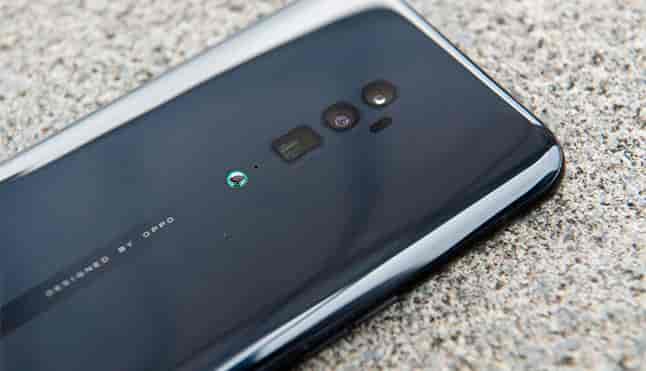
The Chinese mobile phone manufacturers have proposed to demonstrate that they have long stopped copying to take the lead in innovation. And OPPO, which is among the five brands that sell the most in the world, has once again demonstrated in Switzerland that his is not a bluff. After having taken to the extreme the concept of the mobile 'all screen' with the Find X and to have revolutionized the charge of the batteries with the RX17 Pro, now it has put the mobile photography in its crosshairs.
The Shenzhen brand was the first to adapt the system used by periscopes to achieve an optical zoom never before seen on a smartphone, and, although Huawei was ahead of its commercial implementation with the P30 Pro, now OPPO strikes back with the Reno 10: its triple main camera uses a system of mirrors to offer a zoom of ten magnifications with which it covers the equivalent to the focal distance between 16 and 160 millimeters in a traditional camera.
This allows, for example, taking a wide view of a large building using the wide-angle lens, which covers a viewing angle of 120 degrees and is paired with an 8-megapixel sensor, and also pick up any detail of the façade without moving from the place thanks to the periscopic system that has thirteen megapixels. In the middle of this great fan, and for most of the images, OPPO has equipped the Reno 10-there is a version called Reno, to dry, that does not incorporate this zoom-of a very bright standard lens -f 1.7- that captures snapshots 48 megapixels thanks to the Sony IMX586 sensor.
EL PAÍS has already been able to test the smartphone and the results are surprising. The level of detail that the camera obtains at a great distance from the object or the photographed subject is remarkable. In addition, infrared autofocus is very effective, especially in low light situations. But we must remember that, as in the Huawei, the optical zoom reaches up to five increases and that the Reno uses a hybrid system to double that focal length. The loss of quality is minimal, but it is noticeable when the zoom is taken to the maximum. In addition, the system also has its drawbacks: the use of a prism significantly increases the terminal -9.3 millimeters and 210 grams-, and, although the camera has an effective optical stabilizer, you have to have a very good pulse to take clear images with ten increases.
In any case, the main camera is not the only surprise that the Reno 10 hides. The other one is in the design of its previous camera, that of the selfies, which has a resolution of 16 megapixels. OPPO returns to bet by an automatic mechanism that discovers it and retracts it to obtain that the screen of 6,6 inches occupies a 93,1% of the front panel and does not have any type of notch that gives a dentellada to him. But it does not copy the mechanism of the Find X but it does it in a different way: with a piece in the shape of a shark's fin. It activates itself when the user decides to portray himself or when he needs the flash to accompany the main camera, and gives the Reno 10 a distinctive air that is appreciated in a market saturated with phones that resemble each other.
The other features of OPPO's new flagship include the Qualcomm Snapdragon 855 processor - the most powerful of the US manufacturer -, the 8 GB of RAM - accompanied by up to 256 GB of internal storage, expandable by MicroSD card - the 4,065 battery mAh. with fast VOOC 3.0 charging, dual-band GPS that increases accuracy, Dolby Atmos sound, the optical fingerprint reader under the screen, and the OLED display with FHD + resolution.
And among the shortcomings with which the Reno has been presented to the world today - the launch in China was held a few days ago -, the lack of wireless charging and protection against water and dust stand out, elements that are increasingly common in the high-end terminals. The version that includes the ten-fold zoom also gets rid of the headphone jack plug. However, the price seems to justify the elimination of these components, because in China the Reno 10 is sold at around 550 euros. A next version will also have 5G bands. In Europe it will cost 499 euros for the basic version (without the zoom), 799 for the Reno 10, and 899 for the 5G (the last two with the zoom).
Despite its contained price, what has taken the greatest care of OPPO has been the design and quality of the materials, two of its differential factors. In addition to having a front in which the edges shine by their absence, the back cover draws attention because it takes full advantage of the greater thickness of the device. It uses the latest generation of Gorilla glass - the sixth - to offer a panel in which the cameras do not protrude. The only thing that breaks the set is a small ceramic button that, according to the brand, serves to prevent damage to the targets when the mobile is left on a surface. Finally, ColorOS, the Android layer developed by the brand on the ninth version of the operating system of Google, is what moves the Reno.
Digital Newspaper El País
